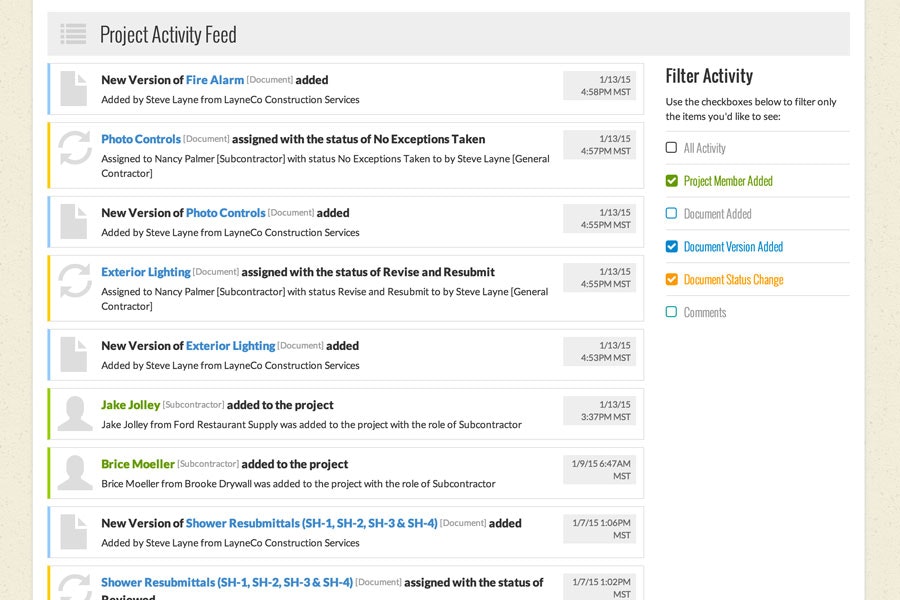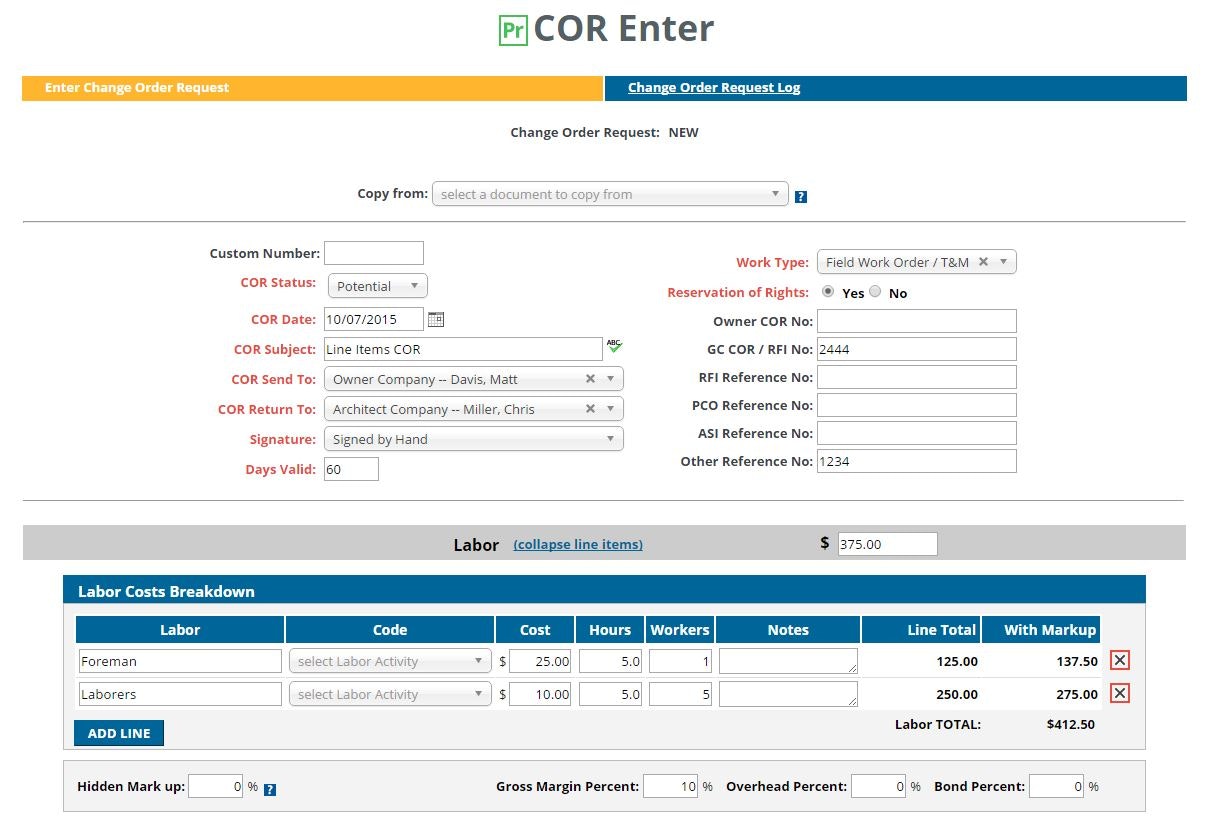4 Ways General Contractors Can Find Incredible Subcontractors
If only there was a Tinder for finding subcontractors. You just scroll through the options and swipe right when you find the perfect match.
Sadly, the world of construction and general contractors is quite a bit more complex than that. But there are definitely some parallels to finding the right subcontractor and dating. After all, when looking for a subcontractor:
You’ve got to be a fit for each other.
You need to build that relationship over time.
Transparency and communication are paramount.
You want to have a lot of good partners to choose from.
OK, the last one doesn’t quite work—but you get the idea. If you want to be efficient with subcontractors, you can’t rely on quick fixes like posting an ad on Craigslist when a sudden need arises.
Finding and hiring the best subcontractors requires time and effort—and some good construction software. This skill is critical to a construction manager in order to fill gaps on a project and avoid delays, but many have trouble maintaining a pipeline.
Construction managers must effectively use software with features that allow them to evaluate and grade subcontractors, as well as build relationships so they have a constant pipeline available to them.
Let’s break down five foolproof ways for building that subcontractor pipeline, and then maintaining it to boost your company’s bottom line. Then we’ll discuss what you can do right now.
1. Build a Database to Draw From
CHALLENGE: First things first, you need a deep database of subcontractors that you can draw from, no matter what it is you need. Scrambling at the last minute to get bids from subcontractors you aren’t even familiar with is no way to run a project, as you’ve certainly come to realize.
SOLUTION: You need to develop a database of subcontractors, and software is the best way to do it.
Phil Pace, president of commercial construction firm The Conseco Group in Nashville, Tenn., said in an interview with Software Advice that his construction management software, PASKR, helps him do this.

PASKR‘s add/remove bidders dashboard (Source)
“I can load up specifications and documents electronically, and automatically invite all these subcontractors. They then respond electronically,” he said. “I can be showing a client six bids for concrete work, and it’s happened to me where a seventh bid just showed up live.”
Pace said that it’s “powerful” for clients to see live what the subcontractor bids are and what the range is so they can understand the value and avoid the problem of subcontractors who grossly mis-bid on a project.
It helps that the software he uses was developed by the man who founded the company he currently heads, but the benefits he cites can be found in many other solutions.
What to Look for in Your Software: Look for software with features that enable you to build a roster of subcontractors, complete with contact information, areas of expertise and a place for notations so you can grade them on their performance for later review if you are thinking about using them for a future project.
2. Use Software That Is Easy for Your Subcontractors to Pick Up
CHALLENGE: If you choose complicated software, your subcontractors won’t give it a chance and might even give up trying to communicate with you—leaving you to resort to old, outdated methods that will leave you both in the dark and at risk of a devastating miscommunication.
SOLUTION: If you’re going to be successful in finding and hiring subcontractors, you need to build relationships with the ones you bring in. Transparency and communication are vital to that effort—and you won’t have that if you’re using different software to create and then sign contracts.
Implement software that is as easy for subcontractors to use as it is helpful to your business.
“Some people just overthink a problem,” Pace said.
“They make [the software] really hard to navigate. It needs to be intuitive, it needs to be readily accessible. I deal with an awful lot of architects and engineers, and they don’t want to learn a new program. Must have a request for information (RFI) and request for proposal (RFP) process they like to follow.”

CM Fusion‘s project logs and activity dashboard (Source)
Pace said he thought it would be an “uphill battle” making subcontractors use his software during the contracting process. But because his software simplifies things for the subcontractor by automatically sending them a contract for electronic signature, he’s found that subcontractors actually love it.
“[Construction software] significantly reduces any subcontractor disputes that I’ve had.”
Phil Pace, president of Conseco Group
What To Look For In Your Software: Find software that is capable of automatically writing a contract and can then send it electronically to the subcontractor for a signature. Don’t allow them to use their own software—choose software that will make the process easy for the subcontractor to ensure they use it, keeping you both using the same system and therefore both on the same page.
3. Use Software That Tells Subcontractors When They’ll Be Paid
CHALLENGE: If you don’t communicate with your subcontractors well on when they’ll be paid, they’ll be blowing up your phone and—if worse comes to worst—not working with you anymore in favor of construction firms who are more transparent.
SOLUTION: Your subcontractors are like anyone else: they want to know when they’ll be paid for their work. Your software should be able to tell them that.
Pace says his software is transparent during the billing cycle so there’s no questions from subcontractors wondering where they stand. And that means fewer headaches for you.
eSUB‘s subcontractor change order dashboard (Source)
“They love the billing cycle,” Pace said. “When they bill, there’s a website that tells them when they’re going to get paid so I don’t get all these phone calls anymore. It’s actually helped me increase my subcontractor base.”
What To Look For In Your Software: Again, you’ll want software that both you and your contractor can share. Look for software that has the ability to share the billing process with those outside of your organization so you can attach payment dates and they can see it.
4. Continue to Build Relationships with Subcontractors
CHALLENGE: If you don’t build relationships with good subcontractors and retain them, you’ll start the subcontractor search process all over again each time you begin a new project, which leads to wasted time and the possibility that you end up with a bad subcontractor.
SOLUTION: Even after the job is done, you should be building relationships with subcontractors:
Set up an informal catch-up meeting to discuss with them after the project about what they thought of the process, and how you could do better.
Have them complete a survey so you can record their responses for referring to later.
Ask them if they have any advice for you, and discuss what projects they might be suited for in the future.
Record all of these notes in your software program.
“Relationships with subcontractors are mission critical because [general contractors] simply don’t have enough people,” Pace said.
“You’re lucky to get coverage on a bid if you’re a general contractor. If it’s your process or your software—if anything makes it more complicated for the subcontractor to do business with you, not only is it more frustrating but in this environment you’re likely to lose them.”
What To Look For In Your Software: Choose software that has a strong performance evaluation function and allows you to manage all of your subcontractors at once.
Here’s What You Can Do to Build Your Subcontractor Pipeline Now
Yes, building deep relationships with subcontractors and developing that pipeline isn’t an overnight process. But you can take steps right now to start down that path, and make better subcontractor hires on your very next project.
Find a construction software program with a database feature and performance evaluation function.
Enter all the subcontractors you currently have information for into that database, including any notes you can think of off the top of your head on their areas of expertise, their past performance and any other vital information you have on them.
Set up a meeting with your top people to discuss how you are going to streamline your current process in a way that will make it easier for contractors to do business with you. A new software option like we discussed above is most likely an important part of this conversation.
Increase your level of communication before, during and after the project to start building relationships with your subcontractors, both the current ones and the ones you bring on board, to gradually build that pipeline.
Note: The information contained in this article has been obtained from sources believed to be reliable. The applications selected are examples to show a feature in context, and are not intended as endorsements or recommendations.
